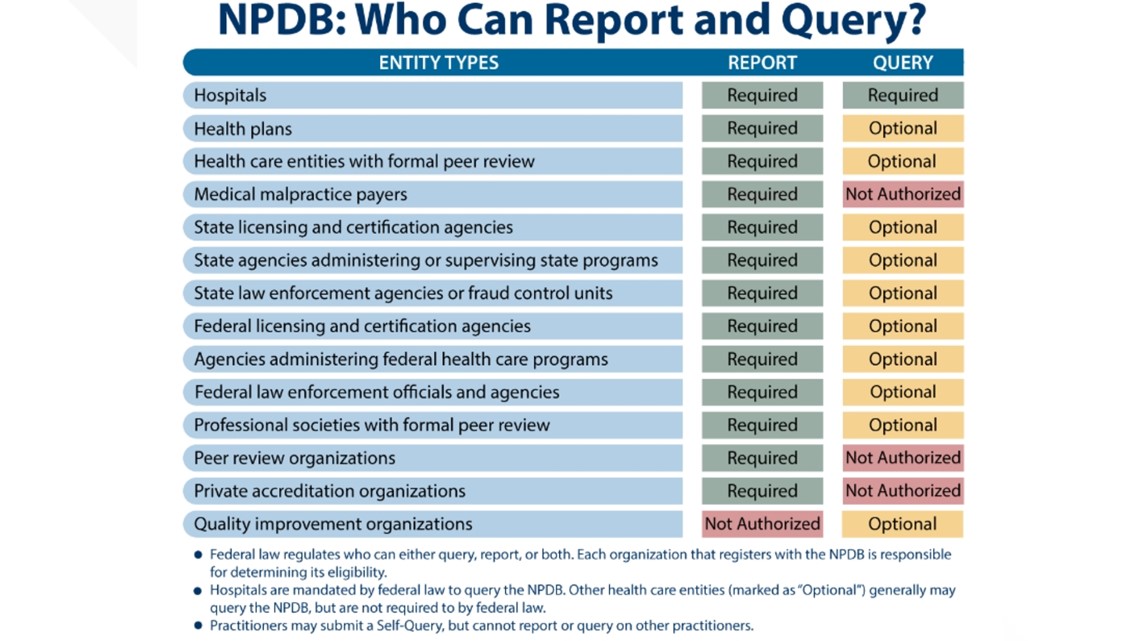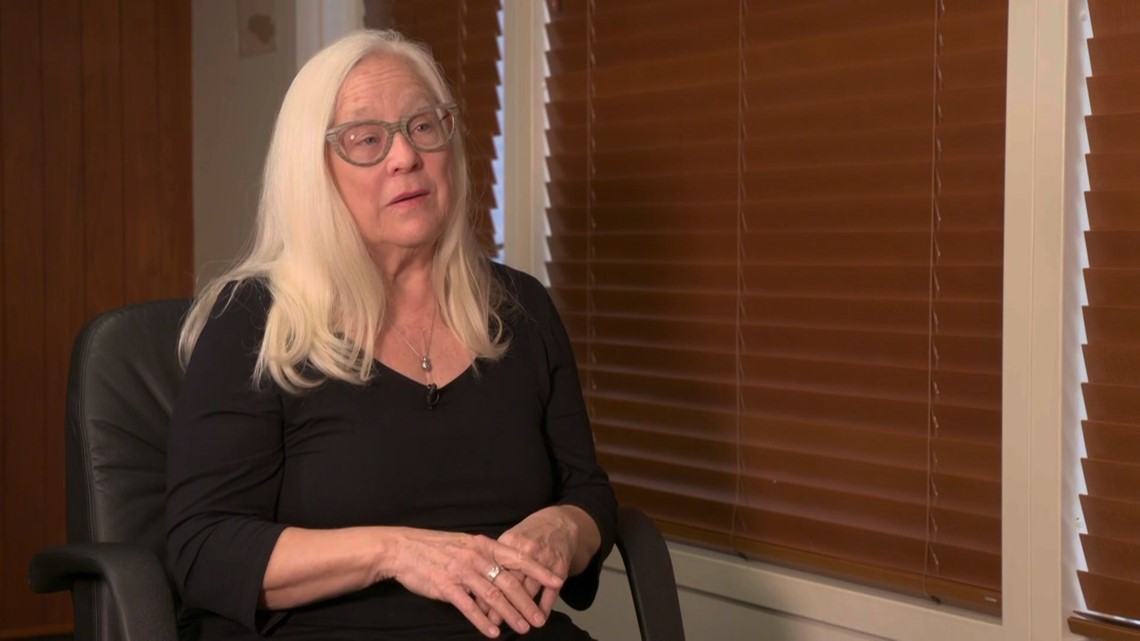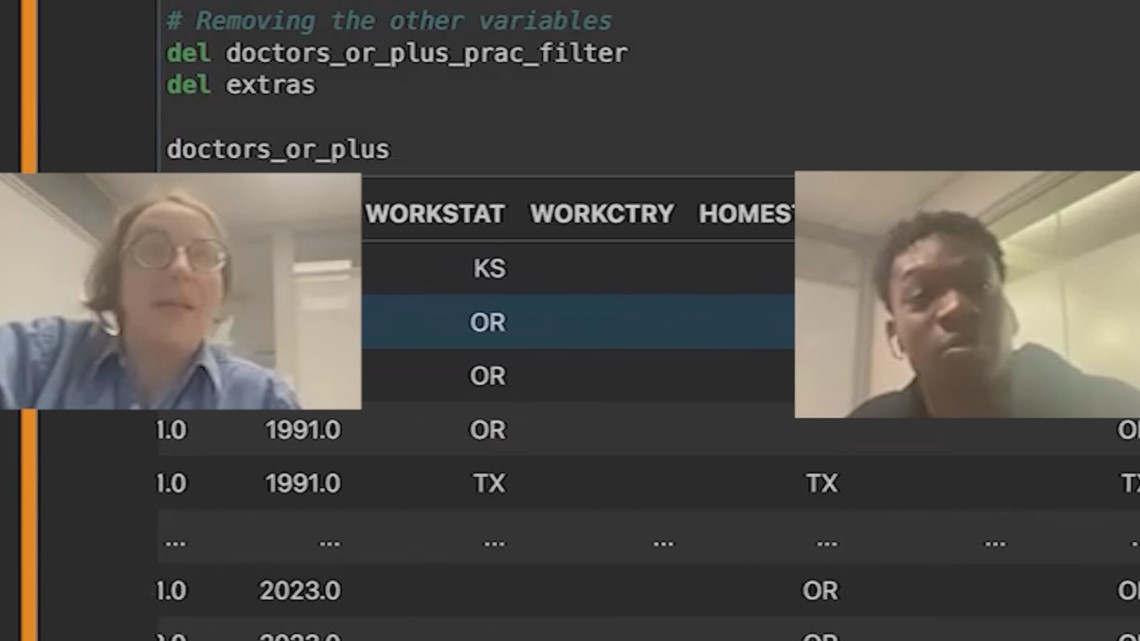State medical boards don’t make it easy for patients to learn about a doctor's past discipline. The Oregon Medical Board’s website allows patients to view some disciplinary and malpractice information about doctors, but it doesn’t provide a comprehensive look at the records.
The National Practitioner Data Bank is the only federal database containing information about doctor malpractice. Congress enacted legislation that spurred its creation in 1986. According to the database’s website, at the time, there was a nationwide problem with the quality of medical care and there was a need to increase medical malpractice litigation.
In theory, the database provides a means of preventing doctors from moving state to state without disclosing serious discipline. But the law doesn’t allow patients to view doctor misconduct through the database. It’s only accessible to agencies like licensing boards, insurance companies and hospitals, meaning patients are kept in the dark. The graphic below shows who can submit and search records on the database.


The push to make the database accessible to patients
For years, advocates like Lisa McGiffert with the Patient Safety Action Network have fought to make the National Practitioner Data Bank public.
“Congress would have to change the law that makes this information public,” McGiffert said.
By making the database public, patients would be allowed to search a doctor’s name and see whether they have been disciplined in various states.


Oregon Sen. Ron Wyden helped create the database 40 years ago. He is a proponent of opening the database up to the public, but also acknowledges the challenges in doing so.
“Well, the hurdles probably strike people as pretty obvious,” Sen. Wyden said. “A lot of the provider groups, the physician groups, are very powerful and they have consistently opposed it.”


One of the organizations that opposes making it public is the American Medical Association (AMA). KGW reached out to the AMA for an interview. The organization declined, but shared a written statement.
The AMA said, in part, “The AMA strongly believes patients must have access to accurate and reliable information about physicians. However, it is well established that the National Practitioner Data Bank (NPDB) is inherently flawed and lacks the accuracy and reliability that the public must be able to count on.”
KGW also contacted the Oregon Medical Board and its members individually to hear their perspective. The agency declined our request for an interview.
We also reached out multiple times to the Oregon Medical Association, which represents doctors in the state. No one responded to us for an interview.
KGW partners with University of Oregon data analysis students
There is one way to look at the raw numbers from the data bank to determine how many disciplined doctors moved to other states to practice. However, it requires specialized data analysis software.
KGW partnered with data analysis students at the University of Oregon. We asked them to determine the number of doctors who were disciplined in either Oregon, Washington or Idaho who then went on to face new discipline in a different state. The students executed an analysis using a computer programming language called Python. Then they independently validated the findings through a separate analysis.


Below is what the students found. The data looks at discipline between 2000-2023:
Oregon
- 59 doctors disciplined in another state later faced new discipline in Oregon
154 doctors disciplined in Oregon were later disciplined for new misconduct in another state
Washington
- 234 doctors disciplined in another state later received new discipline in Washington
156 doctors disciplined in Washington then went on to face new discipline in another state
Idaho
- 48 doctors disciplined in another state later received new discipline in Idaho
- 38 doctors discipline in Idaho then went on to face new discipline in another state
Some states, including California, have taken steps to increase transparency when it comes to investigating and disciplining doctors. For more information about what California has done, read our story here.

